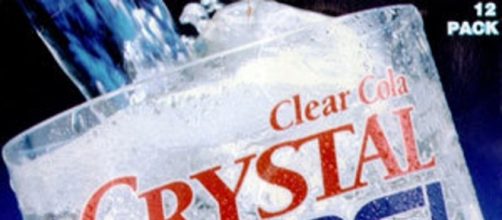The original Crystal Pepsi was on the US market for only one year (from 1992-1993). The idea for theclear soda belongs to David Novak, the former CEO of Yum Brands. He recently told Business Insider that his advertising strategy was to develop a clear cola, which would reinforce consumer interest in purity and health.
It did well at first, gaining some 1 percent of market share, which was considered a huge proportion at the time. But then Coke released Clear Tab in a deliberate effort to wipe Crystal Pepsi out, which it did. Fans longed for the return of this clear soda some 23 years later.
The imminent launch of Crystal Pepsi is bold and daring.
A press release has indicated that while Crystal Pepsi will be delivered to stores next month, the clear soda will only be available for a limited time in the United States and Canada. It success is considered experimental, as a soft launch last year worked out well but was connected to a sweepstakes, making it speculative as to how the public will react to the drink being sold on its own.
Clear soda is not a new idea.
David Novak was not the first to market clear cola but past attempts failed to ignite national interest. White Coke, a clear version of Coca-cola, was probably the strangest of all. According to Mark Pendergrast, author of For God, Country and Coca Cola, this soda came in a clear bottle with a red star on its cap and was especially produced for Russian Marshal Georgy Zhukov, who was said to desire the flavor of the iconic American drink without its recognizable container.
When the leaders of Nazi Germany were cut off from the importation of Coca-Cola syrup during World War II, their scientists invented aclear soda called Fanta, which is still available today in many fruit flavors. According to the book, "Secret Formula: How Brilliant Marketing and Relentless Salesmanship Made Coca-Cola the Best -Known Product in the World published in 1995 by Harper Paperbacks, the original Fanta greatly resembled ginger ale and was comprised of left-over (and sometimes very nasty) ingredients from making different types of cheese.
At one time during the 1800s, soda drinks came in all colors and flavors and were sold as elixirs alleged to cure everything from growing hair to insomnia to infidelity.
In 1903 with the onset of Coco-Cola, the inclusion of the daring dash of cocaine that inspired its name only made it more popular because cocaine was an ingredient present in many medicinal compounds during the Victorian Age.
Crystal Pepsi’s return is credited to Kevin Strahle, a competitive eater and You Tube star, who once worked for PepsiCo. His online campaign began after he bought a 20-year-old bottle of Crystal Pepsi, drank it on camera and proceeded to throw it all up. Will Crystal Pepsi revitalize PepsiCo’s bottom line? No one can say, and not even the crystal ball at this time, is very clear.

